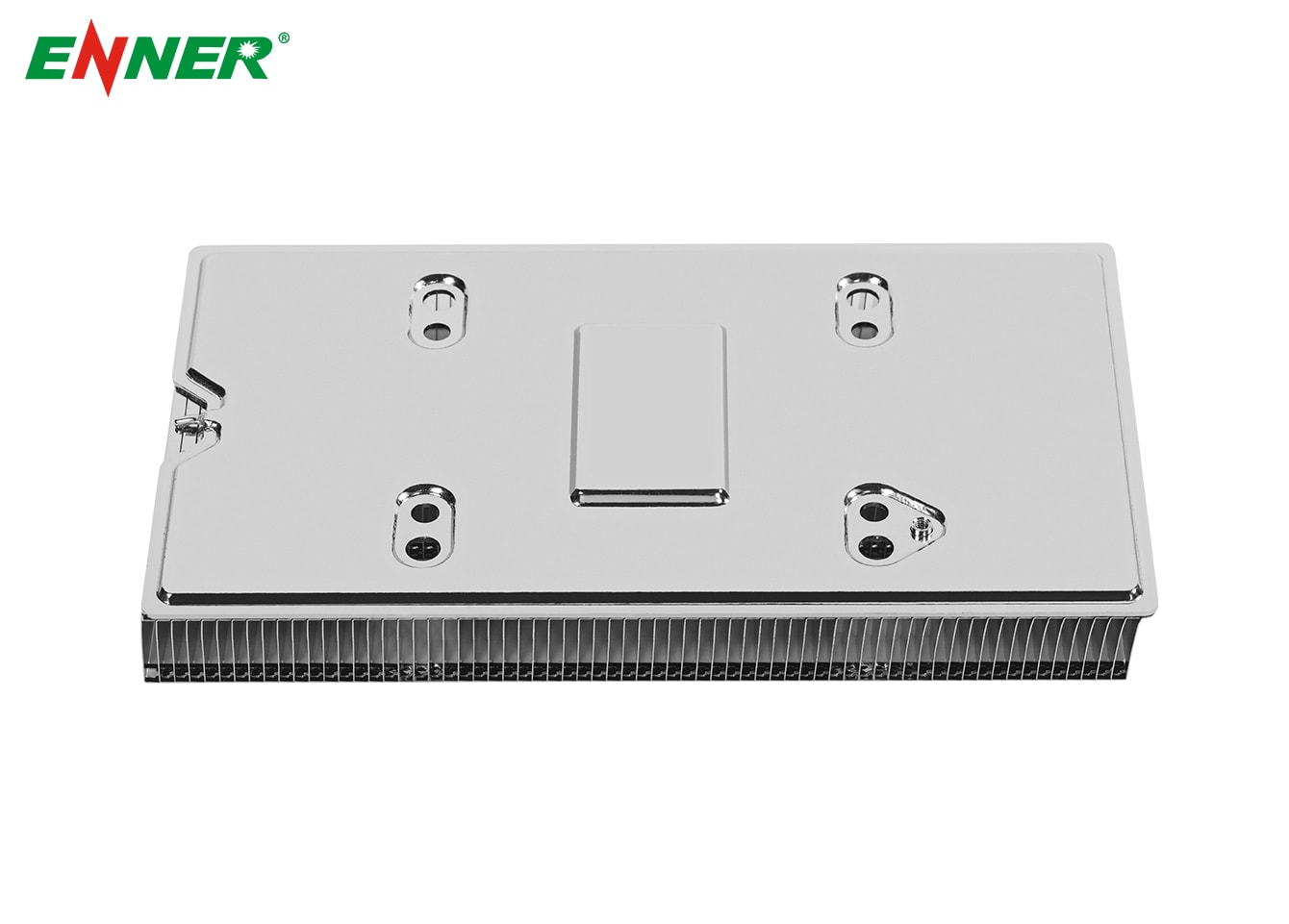Vapor Chamber (VC) technology, also known as vacuum chamber heat spreader, is an advanced cooling method designed to significantly improve heat dissipation efficiency, especially for high-performance components such as CPUs. Unlike traditional heat pipes, VC technology adds a large-area vapor chamber between the CPU and the copper heat pipe, upgrading heat dissipation from a linear "pipe" system to a surface-wide "plate" system. This transition from "line" to "plane" allows heat to be dispersed faster and more evenly, providing an effective solution for cooling high-power-density devices.
To understand the significance of VC technology, it’s essential to compare it to the more common copper heat pipe. While copper heat pipes have been widely used for thermal management in electronics, they transfer heat in a linear direction, which limits their overall efficiency. VC technology, on the other hand, transforms this linear heat transfer into a surface-wide operation, improving heat conduction from all directions.
If the copper heat pipe is like a bamboo stick, then the VC is more akin to a bamboo raft. This larger "raft" covers the CPU and the copper heat pipe, transforming the entire surface into a heat conductor. By expanding the heat exchange area, the VC ensures that heat is removed faster and more uniformly from the high-temperature regions.

There are several types of VC heat spreaders available in the market today, with copper-based VCs being the most common:
Slice Chamber VC : This type involves flattening copper pipes and inserting a capillary structure and support frame inside, which is then sealed by welding on both sides.Example: Slice Chamber VC Heat Spreader.
Conventional VC (Large VC) : Made from two copper plates with a capillary structure and support columns in the middle, the plates are welded together at the edges to create a sealed chamber.Example: Large VC Heat Spreader.
Ultra-Thin VC : Typically made using thin copper sheets that are etched and combined with a sintered mesh structure, then welded along the perimeter to form an ultra-thin heat spreader.Example: Ultra-Thin Heat Spreader.
The VC cooling mechanism involves a phase-change process that effectively transfers heat from the heat source to the heat sink. Here’s a step-by-step breakdown of how a vapor chamber operates:
Heat Absorption : The base of the vapor chamber is attached to the heat source, such as a CPU, where the heat evaporates the liquid inside the VC. The heat from the source turns the liquid, often purified water, into vapor under vacuum conditions (less than 104 Torr or lower).
Heat Conduction : The vapor moves through the vacuum chamber, aided by the internal copper mesh or sintered wick structure, rapidly transferring heat to the cooler areas of the chamber.
Condensation and Heat Dissipation : The vapor reaches the upper cold source of the heat spreader, where it releases its heat and condenses back into liquid form. This phase change efficiently removes heat from the system, cooling the vapor and the chamber.
Liquid Return and Re-Evaporation : The condensed liquid returns to the heat source via capillary action through the internal microstructures, such as copper mesh or wick channels. This process is then repeated in a continuous loop, ensuring efficient heat dissipation from the system.

Internally, the vapor chamber is designed with a layer of capillary structure along its walls, usually made from sintered copper or copper mesh. The chamber is evacuated to create a vacuum, and a small amount of liquid is injected into the sealed chamber. When heat is applied, the liquid inside vaporizes and travels to the cooler sections of the chamber. Upon cooling, the vapor condenses back into liquid form, which then returns to the heat source via the capillary network. This cycle repeats, effectively spreading the heat from the heat source to the cooling area.
Superior Heat Dissipation : The VC's ability to transfer heat in multiple directions and across a large surface area makes it far more efficient than traditional heat pipes, which can only conduct heat in one direction.
Faster Cooling : The VC's large heat exchange area enables rapid heat removal, preventing hot spots from forming on the CPU or GPU, which in turn extends the lifespan of the components.
Compact Design : VC heat spreaders are often thinner than heat pipes, allowing them to be used in space-constrained environments, such as ultra-thin laptops or compact servers.
Higher Thermal Conductivity : By leveraging the phase change process of the cooling liquid, VC technology can transfer heat more effectively than standard metal conductors, leading to improved overall performance.
Vapor Chamber (VC) cooling technology represents a significant leap forward in thermal management solutions. Its ability to handle heat dissipation across a wide surface area with high efficiency makes it ideal for modern high-performance electronics. As heat output continues to rise in today’s CPUs, GPUs, and servers, VC technology is rapidly becoming the go-to solution for effective thermal management.
At ENNER , we specialize in providing a range of high-performance cooling solutions, including vapor chamber heatsinks , heat pipe cooling , CNC machining parts , extrusion heat sinks, skived heat sinks, and accessories . Our cutting-edge technologies ensure that your devices remain cool, efficient, and reliable.
By continuing to use the site you agree to our privacy policy Terms and Conditions.